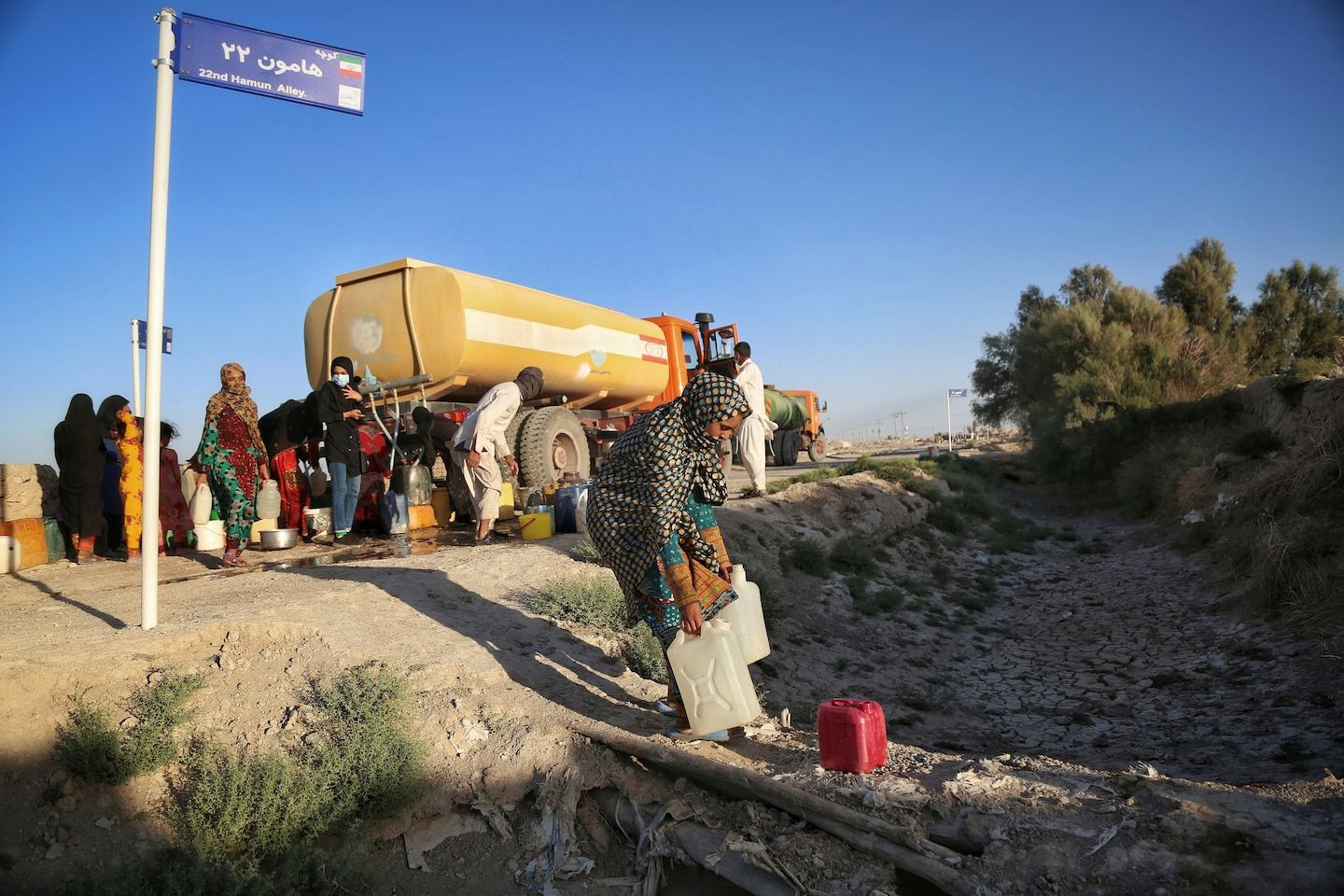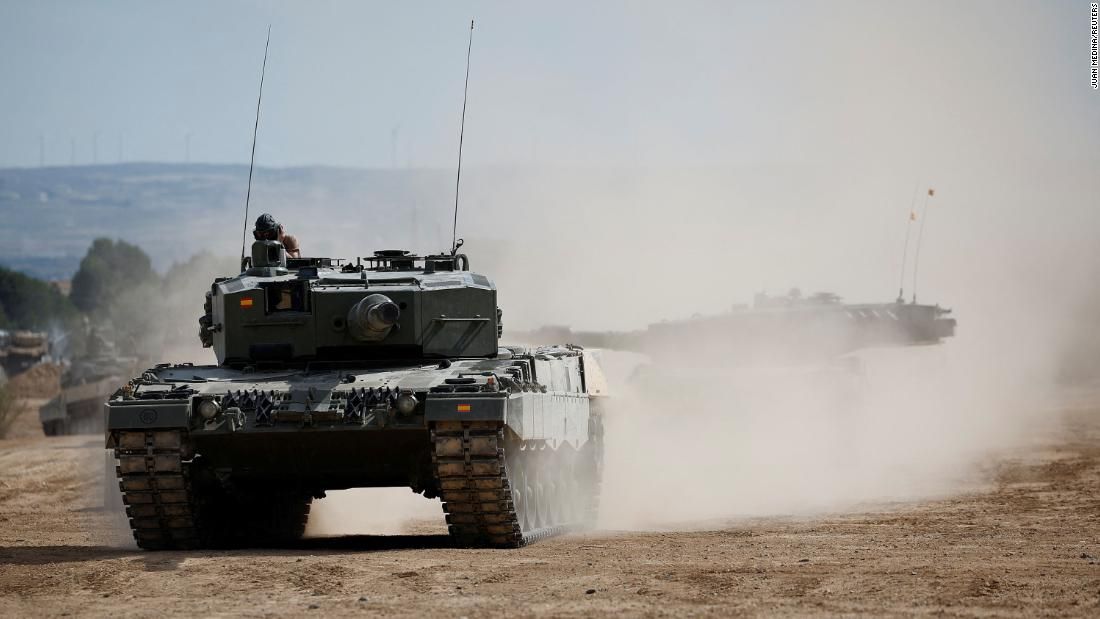As water shortages intensify Iran's heat wave, authorities shift blame
Listen 7 min Comment on this story Comment Gift Article Share
Taps are running dry across Iran. On Sunday, a record-breaking confluence of heat and humidity translated to an off-the-charts heat index value of more than 150 degrees, at the very limits of human survival, measured at Iran’s Persian Gulf International Airport. Earlier this month, more than 1,000 people sought medical treatment after dust storms ravaged the country’s water-starved southeast.
From Tehran to rural regions, people are posting videos to social media complaining of days on end in the heat without running water, their faucets emitting nothing but murky drops.
The water shortages, which experts say are driven in large part by decades of mismanagement, are a long-standing problem. But they have grown more severe as climate change accelerates — and are an increasing driver of discontent, sparking protests and confrontations in recent years.
Advertisement
Over the weekend, the head of Iran’s Islamic Revolutionary Guard Corps warned against demonstrations during a visit to drought-plagued Khuzestan, a recurring center of unrest. Local officials in the northeast province of Golestan pleaded on Monday for water tankers, to avert protests. The government can little afford further threats to its authority in the aftermath of its relentless crackdown on the uprising against clerical rule that grew last year from protests over the death 0f Mahsa Amini, a 22-year-old Kurdish woman, in the custody of the “morality police.”
In public messaging, Iran’s leaders have sought to deflect blame to the Taliban, which rules in neighboring Afghanistan, for restricting water flow in the Helmand River. Officials have also blamed floods and fallen rocks, for disrupting the operation of dams around Tehran, and ordinary citizens, for their consumption of water and electricity. But those explanations have left many unsatisfied: People interviewed for this report in six provinces described a water crisis both untenable and worsening, for which the government has not claimed responsibility.
For decades, Iran’s authorities have tried to appease the immediate demands of the agricultural sector — a bedrock of political support — by building tens of dams that divert the natural flow and accumulation of water, said Kaveh Madani, director of the United Nations’ water think tank, who resigned as deputy head of Iran’s Environment Department and left the country in 2018, facing accusations of spying for the West.
Advertisement
The policies have taken a toll. Agriculture is sapping Iran’s surface water, stored in rivers, lakes, wetlands and reservoirs, Madani said, but most worrying is the depletion of groundwater reserves, deep below the surface and slow to replenish, which have fallen into “bankruptcy.” Experts say the damage is irreversible.
Iran’s leaders “are looking for something to tell the people, to provide them with some sort of reason for their negligence over the years,” said a former environmental official in Sistan and Baluchistan province, a severely water-stressed region bordering Afghanistan. The water shortages are “showing them the extent of their incompetence.”
He spoke on the condition of anonymity, as did all those in Iran interviewed for this article, to preserve their safety and that of their families.
Dry taps in Tehran
Residents of Iran’s sprawling capital faced an uncommon ordeal last month, lining up to fill and lug home jerrycans after water stopped flowing to faucets in parts of the city.
Advertisement
Mohsen Ardakani, chief executive of the Tehran Province Water and Wastewater Company, a public utility, rejected reports of water shortages. He told state-affiliated media outlets that some areas faced “water fluctuations.” But some residents of Tehran and neighboring Karaj continue to lack running water, according to reports shared online.
“What scares me is that if we are running out of water now, then what is going to happen to our children tomorrow?” said a 35-year-old man from Tehran who owns a technology firm. The water crisis has left him wondering whether he wanted to marry and raise children in the country.
Iran’s Environment Department did not respond to a request for comment. The Washington Post is not accredited to work in Iran.
Groundwater gone
Iran — which boasts diverse terrain, from deserts to ice-capped mountains — is in a region among the most vulnerable to climate change, research has found. The effects are already far-reaching. As average temperatures rise, extreme weather such as dust storms and floods intensifies. Desertification, sinkholes and salty soil become more widespread.
While climate change is “adding fuel,” Madani said, “the house was already on fire.”
Advertisement
Over decades of U.S. sanctions and hostile relations with the West, Tehran has subsidized agriculture to secure food and jobs. The sector consumes some 90 percent of available water, said Soroosh Sorooshian, director of the Center for Hydrometeorology and Remote Sensing at the University of California at Irvine. As years pass, wells must be dug deeper.
Even after a relatively rainy year, the reservoirs most crucial for drinking water and irrigation are more than 80 percent empty, Iran’s official Water Resources Management Company told state-affiliated news outlets this month.
Authorities remain adamant about building more dams and redirecting water to address shortages in the short term, Madani said. After years of deterioration, “you cannot restore lakes and wetlands at any time you decide,” he said. “You cannot restore the level of groundwater whenever you decide, or fully prevent sand and dust storms, deforestation and all the loss of biodiversity.”
Taliban tensions
In May, Tehran turned its wrath on the Taliban, accusing it of violating a 1973 water treaty by restricting flow from the shared Helmand River from Afghanistan into Iran. The Taliban blamed the overall diminishment of the drought-plagued river. Tensions reached their highest level after two Iranian border guards and one Afghan soldier were killed in a clash along the border in May. Days later, Iranian President Ebrahim Raisi traveled to the area to champion “the water rights of Iranians,” he said.
Advertisement
The fighting occurred along the border of Sistan and Baluchistan province, the capital of which, Zahedan, has been one of the remaining bastions of anti-government protests since the state violently suppressed last year’s “women, life, freedom” movement. During months of protests, Iranian security forces killed more than 500 people and executed at least seven in connection with the protests, according to the Iran-focused Human Rights Activists News Agency.
Experts say the river is only one part of the story. The former Sistan and Baluchistan official said the Taliban was a useful scapegoat for Tehran.
“Let’s assume that the Taliban gives Iran its share of water,” he said. The water crisis would still remain far from solved.
Shadow of unrest
Some of the most parched provinces, such as Khuzestan, along with Sistan and Baluchistan, are historically home to many Sunni Muslims in Shiite-majority Iran. Water shortages exacerbate poverty in these marginalized communities — and drive migration out of them, the official said.
Advertisement
“We are faced with constant water cuts that prevent us from being able to manage our daily activities,” said a 33-year-old woman from Khuzestan province. “When we ask authorities for help, their answer is, ‘Use less water.’”
In July of 2021, amid a crushing drought in Khuzestan, security forces killed at least eight protesters after days of demonstrations against the government. Solidarity protests broke out in several cities, including Tehran. In November, security forces clashed with protesters in Iran’s third-largest city, Isfahan, demonstrating in support of farmers hit by drought. Once again, protests spread.
“After the protests of 2021, nature came to the rescue and we had more rain,” said a 48-year-old man from Isfahan who works in the steel industry, “but absolutely nothing changed in the management of water.”
Gift this article Gift Article
Source: The Washington Post


